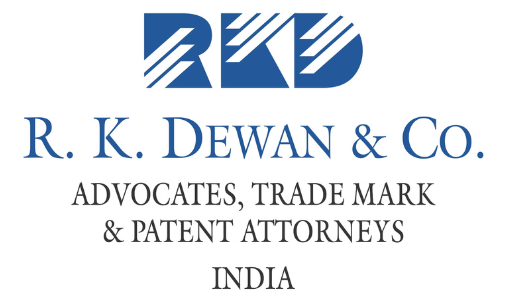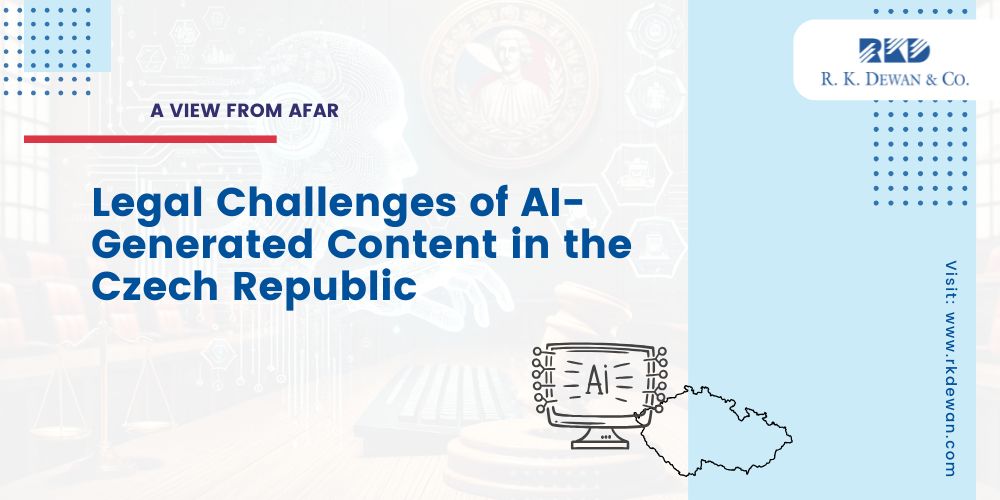Legal Challenges of AI-Generated Content in the Czech Republic
Prologue:
Justice Manmohan Singh of the Delhi High Court has remarked in a judgment, “The world is a global village.” This sentiment captures the essence of our interconnected era, where globalization and interconnected markets continually redefine our world. Today, the judgments handed down in courtrooms across the globe can have far-reaching consequences and the ripples of these legal decisions extend far beyond their local jurisdictions, influencing economies and industries worldwide.
Welcome to “A View from Afar,” a series dedicated to examining international judgments and their far-reaching impacts. Through this series, we aim to bridge the gap between diverse legal systems and their global repercussions, offering you a panoramic view of the intricate interplay between law and commerce.
We will delve into landmark rulings from various corners of the world, unpacking the legal reasoning behind such decisions and scrutinizing their practical implications. Each article will provide a thorough analysis, shedding light on how these judgments affect not only the parties directly involved but also affect the regulatory frameworks, corporate strategies, and market dynamics on a global scale.
Whether it is a judgment delivered in the United States or the European Union, we will share our views on its profound impact in other jurisdictions navigating through the labyrinth of international jurisprudence.
The Municipal Court in the Czech Republic recently had to deal with the issue of copyright protection for content created with the help of generative AI, in the case of S. Š, nar. xxx, Xxx, Xxx vs. TAUBEL LEGAL.The primary aspect for consideration at the heart of this judicial discourse was whether an image created by artificial intelligence be accorded copyright protection? A question that not only impacts the immediate parties involved but also sets a precedent that resonates across international borders. How will this ruling influence the legal landscape for AI-generated content in Europe and beyond? What implications might it hold for technological innovation, creative industries, and intellectual property rights globally?
Join us in the second instalment of “A View from Afar” as we delve into the nuances of this case, unpacking the legal arguments, exploring the court’s reasoning, and analysing the broader implications for copyright law and technological innovation in a connected world. Discover how judicial decisions in one jurisdiction can reverberate globally, shaping the future of legal protections in an age of technological transformation.
The “creator” of the content, sought redressal for alleged copyright infringement against a local law firm, alleging ownership of an image created through the AI model, DALL-E, which is a text-to-image model developed by OpenAI to generate digital images from prompts.
The creator had prompted DALL-E to craft an image depicting a scene of contractual signing illustrated by the visual portrayal of hands. The prompt given by the creator was to “Create a visual representation of two parties signing a business contract in a formal setting, such as a conference room or a law firm office. Show only hands.” Subsequently, the alleged infringer downloaded the image from the “creator’s” website and displayed it on their own digital platform.
The creator instituted an action for copyright infringement against the infringer, alleging that it was the author of the generated image and demanded that it be withdrawn and sought injunctive relief.
The crux of the legal debate revolved around two key inquiries:
- Whether an AI-generated image qualifies as a copyrightable work.
- Whether the individual who furnishes the prompt to the AI tool can be considered the author of the resultant image for the purpose of copyright law.
The Court noted that the Czech Copyright Act confers upon the author of a work the right to demand, amongst other things, a determination of authorship of the work and various forms of injunctive relief aimed at prohibiting unauthorised exploitation of the work.
The Act (similar to the Copyright Law of several countries) also states, that the author of a work for the purposes of the Act is “the natural person who created the work“.
In this case, it was not disputed by the parties that the image was created through the use of DALL-E, but the creator’s case was that DALL-E created the Image based on its specific instructions (prompts), and that the creator was therefore the author of the image.
Despite the creator’s assertion of authorship based on its prompt to DALL-E, the Court found evidential substantiation lacking. The Court held that, a work of authorship must be the unique result of the creative activity of a natural person. Unless the creator can demonstrate that the generated image is the result of its unique creative contribution, it is not a work of authorship.
It emphasized that genuine authorship necessitates the distinctive creative input of a human mind, a criterion unmet by AI-generated content. Consequently, the court ruled that the image, devoid of human creative agency, could not be granted copyright protection. The Court further ruled that where there is a prompt, one can potentially talk about the ‘theme’ of a work, however this ‘theme’ is not in itself eligible for copyright protection. Hence, the image was held to not be eligible for being protected under copyrightand could not be licensed or further traded as intangible property.The Czech judgment not only encapsulates the legal intricacies surrounding AI-generated content but also sets a precedent for future jurisprudence in any jurisdiction.
This case and the facts surrounding it, prompted me to evolve a solution for other “creators” who are using artificial intelligence to generate works of art.
Under the Indian Copyright Act 1957 (Copyright Act), originality of the work forms the bedrock of copyright protection, mandating creative genus by an author.
While generative AI tools harness vast datasets to produce outputs, the threshold for originality remains contested as generative AI tools train on data scrapped from millions of pre-existing sources and give outputs based on a combination of these sources and their models. The output produced by AI tools do not satisfy the requirement of “creativity” required for copyright protection, if they are viewed as a collection of data compiled from already existing sources without any infusion of creativity, a stance echoed in Indian jurisprudence.
A potential recourse lies in classifying AI-generated content as a “derivative work”, subject to substantial variation from pre-existing material. The Copyright Act protects two kinds of works: primary works and derivative works. Primary works are not based on any pre-existing works. Derivative works are works based on existing subject matter. For derivative works to get copyright protection there should be a substantial variation from the pre-existing work. This variation cannot be trivial; it must be significant enough to distinguish the derivative work from its source material. AI tools scrap data from pre-existing sources; however, the output produced is not a verbatim copy of pre-existing sources. The output is based on the AI model’s specific learning based on the data it has trained on.
Hence, if the creator has an existing collection of artistic works and prompts the AI tool to scan his or her own collection, then the work created by the tool may qualify as a derivative work.
If the creator does not have any works in his or her own collection, the creator may secure a due license from a prolific artist to use their works as a set, run the AI tool on that set and derive an output which may qualify as a derivative of the joint authorship of the licensor and the licensee. This not only respects the rights of original creators but also promotes ethical practices in AI content generation. Navigating the classification of AI-generated content within the framework of derivative works under the IP laws requires careful examination of the creative process involved and adherence to copyright law. By incorporating proper attribution and obtaining necessary licenses, creators can uphold legal and ethical standards while harnessing the potential of AI technology in content creation.


